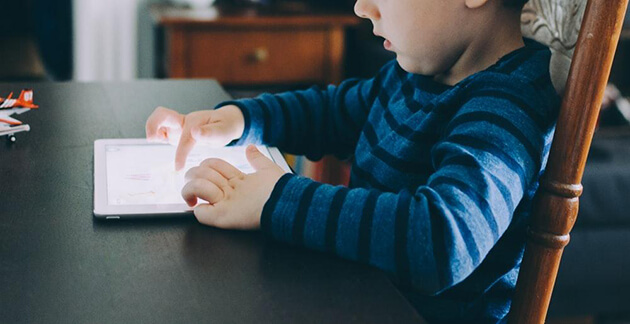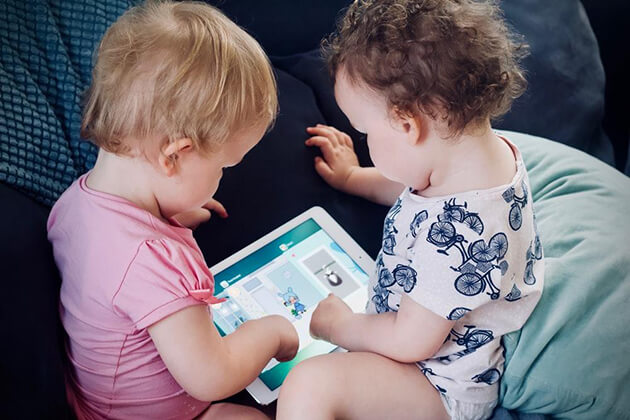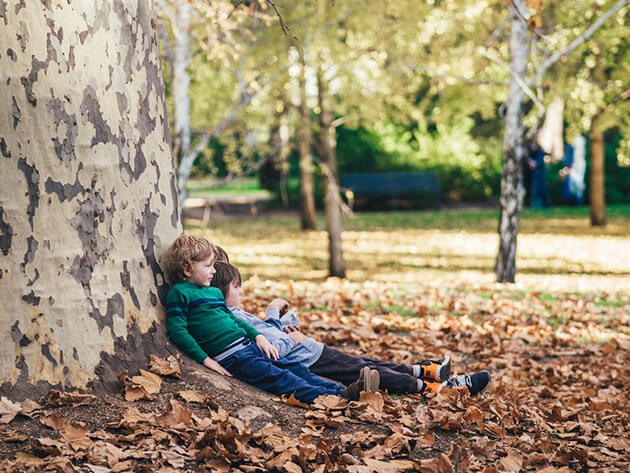Since the invention of the iPad 12 years ago, the methods in which our children play and interact have changed. Research shows that nursery-aged children nowadays can spend over 2 hours a day with screens, compared to the figures found from the 2020 British Survey of Play where only 10% of children’s play happens in natural, flexible spaces. Now more than ever we are witnessing children who are reluctant to play, and even find initiating play confusing due to the over-reliance on technology. We must re-engage our young children, by using the brain’s favourite way to learn: play.
We spoke to one of the co-founders of the Curiosity Approach, Stephanie Bennett, to get her expert take on the biggest mistakes settings can make when implementing the rhythms and routines and how to avoid them.

What is the Curiosity Approach?
Driven by the need to re-introduce our young children to the innate aspect of play, the Curiosity Approach was co-founded by Lyndsey Hellyn and Stephanie Bennett who both own several nurseries in the Midlands. Stephanie spoke to Blossom Educational to explain to us the importance of the approach in every nursery as well as the biggest mistakes settings can make when implementing the rhythms and routines.
The Curiosity Approach is a beautiful recipe book, which includes a mixture of Hellyn and Bennett’s most inspirational and influential early learning pioneers. You will find elements of theories and approaches from Reggio Emilia, Montessori, Pikler and Steiner combined with the core values the pair feel are essential for developing well-rounded future citizens. The approach, in a nutshell, is turning the focus back to the children themselves. This is done by encouraging careful risk taking, increasing social engagement and conversation, as well as giving children the opportunity to be as creative as they can be, all within a safe and loving environment.
Why is the Curiosity Approach important?
Think about the technical age we currently live in; are children ever bored for long? They have an endless stream of films and tv programmes to watch across several continually updating platforms. Their devices connect them to anywhere in the world and there are apps available to meet every interest or need they may have. Our young children are becoming conditioned to immediate entertainment that they have no part in shaping. In fact the programmes they engage with shape them.
The developmental danger these children currently face stems from the lack of imaginative opportunities children are presented with. These children are ‘playing’ on devices without sufficient brain stimulation or development. They know only endless possibilities of film options or games to play. We need to be bringing them back to the heart of education: to learn, play with others, and to develop lifelong learners.
Speech and communication is the highest area of need found in all UK schools. This highlights the necessity for language-rich nursery settings where interaction with others is the underpinning priority. Of course, this is not a generalisation across all children, families do put in incredible effort to offer exciting learning opportunities for their children, but is there a balance between off-screen flexible play vs screen-based interaction?

What are the benefits from implementing the Curiosity Approach?
The benefits for implementing the Curiosity Approach throughout your nursery are significant. They range from increased social, language, and communication development, to building a connection with the world we live in, and finally, to becoming engaging, life-long learners. Stephanie explains the importance of the Curiosity Approach taking the key role for ‘undoing’ the passive learning our young children have been programmed to be used to.
Building strong foundations of personal, social, and emotional development that will go beyond the time they are under your care, will also extend far beyond their 2-year review or Early Years Foundation Stage Profile. This approach is not a fad or an initiative with a time-limit. It is underpinned by pioneering early years leaders’ research and is developed for the modern-day child and their needs. The aim is to encourage the use of natural resources, by avoiding mass-produced plastic toys and materials.
By encouraging your young children to interact with these natural materials however they wish to, the child becomes the shaper of the game, rather than the manufactured toy shaping the play for the child. A stick becomes a wand to ward off evil wizards, or a plane flying through the air, or even an object of competition deciding who can throw the farthest. By using these natural materials, which don’t contain small, breakable parts, children are able to engage with messy play comfortably. It also allows for play to be extended to home, without the need for expensive and specific toys to continue the fun.
Where are you going wrong with your provision?
The Curiosity Approach is a clear understanding of what you want the children to learn via play and how the resources you provide facilitate this vital learning. Simply altering the nursery’s aesthetic to neutral tones and natural materials isn’t enough. The learning activities, environment, and rhythm of the provision must be wholly driven by the questions of why and who is this for?
There are significant external pressures on your nursery team to hurry the child’s development in the academic disciplines and to make them ‘school-ready.’ These are often supported by the parents who are also programmed to think academics and getting ahead sooner, faster, and earlier is what is best for their child. This can make the implementation of an approach where flexible, sociable play is favoured over table-top exercises a challenge, but it’s entirely worth it. The main mistakes nurseries make when implementing this approach centres around these three areas:
Resources
Resource budgets are tight, and the temptation to buy cheaper items in bulk can take over the reason why you are buying this resource. The Curiosity Approach encourages the use of natural resources, preferably with neutral tones, to allow the play to have centre stage instead of the shiny, new resource. Think of a set of plastic toys: it may be building blocks or plastic food. How do they feel? How do they smell? Unfortunately, they are exactly the same as each other. There are no extra dimensions to exploring with bulk-bought plastic toys. In comparison to natural toys (possibly made from wood), just think of the different weights these objects may be, and how this small difference can alter a child’s interaction with the resource.
A key mistake nursery teams can fall into is the quantity of their resources. Have you ever read a restaurant menu and felt overwhelmed? With so many choices to choose from, you are unsure of what direction to take. When finding resources, less is definitely more. Allow the children to take the star role in the game- not the toy itself.
Stephanie highlights this as one of the biggest misconceptions nurseries have: the need to ‘dump all plastics in one fail swoop when they [nurseries] aren’t sure what to replace them with.’
When you audit your resources, you may find some that don’t fit the bill anymore. Don’t throw them away. There are many sustainable and responsible ways to give your old toys a new lease of life.
- Disassemble the toys where possible so they can be used for loose parts play
- Donate the unused toys to a local charity shop
If you throw plastic onto the floor, it usually won’t break. By using more natural objects it is possible there may be breakages, although you will need to ensure your risk assessment covers this possibility. However this is an excellent teaching point as children can see first-hand the respect that is needed to look after an object, with the following consequence of breaking an object being that it is unusable.
Routine
Children, and adults alike, need routine. It helps lower anxiety, allows for healthy habits to form, and gives structure to the day. A common mistake can be to fall into the school routine too early. It can be easy to think of EYFS as a stepping stone to ‘formal education’, but early childhood has a time of its own. These years are vital for children’s development, experiences, and interactions- all which mould them into the adult they become.
The co-founders describe this structure as more of a rhythm than a strict routine. This ‘rhythm’ includes aspects like having set times for meals and additional times for outdoors. In fact they strongly encourage meal times to be a special and a social event, while also allowing enough time a child needs to engage without a timescale. By also avoiding rushing and hurrying to finish an activity, the option to continue their task or game when possible can help keep the routine in place but allow for further depth of exploration.

Environment
Stephanie explains one of the largest mistakes nurseries make when trying to implement the Curiosity Approach is the misunderstanding of the purpose of the aesthetic. Referring to both the indoor and outdoor space your children engage with, it can be easy to fall into the Instagram-aesthetic appreciation. This is where you see beautifully decorated and vibrant display boards to celebrate the children’s learning, and then spend hours replicating this in your own setting. And common sense tells you, ‘We work with young children, it should be bright and colourful, right?’ The difference between engaging and distracting can be a fine line, which is often linked with the colour palette and ‘busyness’ of the board.
Research has highlighted the negative impact excessively vibrant displays can have on children’s concentration and the ability to regulate their behaviours and emotions. The aim of a display board is to stimulate, celebrate, or engage, so audit your current display boards with a critical eye to see if that is being achieved. Neutral backing material such as hessian is a perfect tone and texture for display boards, as it allows staples to be pulled off when time it’s to refresh rather than needing a stapler remover or ripping the existing paper.
The phrase hygge (pronounced hue-guh) is a Danish word explaining that feeling, whether alone or with others, where the setting feels cosy, homely, or special. This is the aim for the nursery environment; bringing the children to a home away from home setting. By avoiding excessive use of table-top activities, the nurturing, hygge setting becomes a place where they can flourish. The addition of comfortable chairs and sofas can make an open-plan nursery room feel homely, with the addition of textured rugs and pillows for further sensory stimulation.
The benefits available from encouraging curious play across all areas of development are significant. Explaining your reasoning of why these are your learning methods with parents can shape the flexible and interactive activities they may try with their child at home. And ultimately, this encourages children to step away from their technical devices and engage with the world around them.
Subscribe to receive expert advice and tips from seasoned professionals in the early years sector.